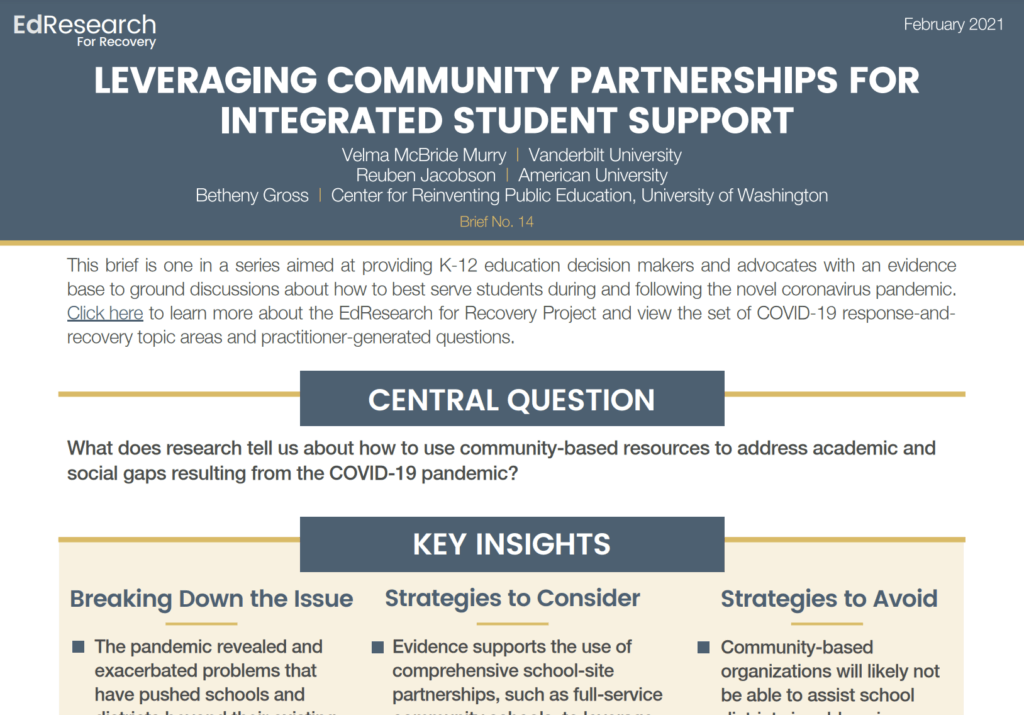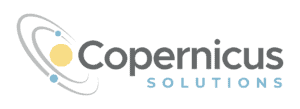Menu
PARTNERING WITH CBOs
What community-based organizations do you have available, and how can you maximize them?
Community-based organizations (CBOs) are organizations that provide various supports for youth, such as after-school programs, youth-development organizations, learning hubs, and enrichment programs. These organizations often have roots in the community and reflect students’ backgrounds. They can be key partners in meeting students’ needs and accelerating their learning.
WHY
- “It takes a village to raise a child.” We cannot do this work alone. We need to lean on all partners to uplift, support, and play a role in accelerating learning for our students.
- Research compiled by the Children’s Aid Society (see page 20) shows that well-implemented collaboration among community-based organizations, schools, and parents to provide additional support for students can directly impact student achievement.
- Accelerating learning doesn’t always mean direct academic support, but can come in the form of mentorship or enrichment that unlocks the motivation to learn.


KEY TAKEAWAYS
- The key is instruction, not supervision. The most critical thing is to vet partners and provide training to ensure that CBOs are offering not just supervision, but high-quality academic support aligned with instruction.
- Leverage existing relationships to find your partner. You don’t always have to reinvent the wheel. Do you already partner with an after-school provider? Then consider rescoping that relationship and providing guidance to ensure you are leveraging the relationship as well as you can. Are you looking for a referral for a new partner? Ask a parent, teacher, or peer leader with deep ties to the community for suggestions.
- Align on a shared vision, academic priorities, and best practices for improving student outcomes. In order for CBOs to best support learning acceleration, they need to have a sense of grade-level standards. Communicate your academic priorities, philosophies on accelerating learning, and high-level grade-appropriate content. Maintain regular communication to determine what adjustments are needed to get you closer to your goals.
CURATED TIPS
- Assess your needs and determine the type of partnership you want. As a LEA team, think about your needs and what you are trying to accomplish specifically.
- Are you trying to move the needle on homework completion? Do you need to make sure students have access to books and are reading? Are you trying to inspire and motivate students? Are families looking for additional supports or experiences that could be provided by a CBO partner? This is a great opportunity to strengthen your connection to families and involve families in shaping the school programming.
- Given the many ways you can work with a CBO, think about what type of relationship you are looking to cultivate. On one end of the spectrum is a community school, with dedicated funding and staffing to support an integrative CBO partnership model; in between is something like the the San Francisco Community Hub Initiative (a citywide, neighborhood-based strategy to support children, youth, and families during the school year, in which community hubs provide support for students in grades K-12 who are utilizing SFUSD’s distance learning curriculum, and prioritize children and youth with high levels of need); at the other end of the spectrum, schools may not actively engage with outside partners. Are you in a position to scope more integrative partnerships to provide wraparound services, or are you, for example, looking to provide families with a list of community resources they can pursue? There is still significant value to partnering with CBOs even if you are not on the “community school” end of the spectrum. (And if you do decide to pursue an integrated partnership where you’ll be sharing student information, consider FERPA implications around data-sharing and standard operating procedures related to clearing any partner that may be working with students on site.)
- Leverage relationships to find a CBO partner. Conducting a market analysis to find a CBO partner can feel daunting. Instead, consider revamping an existing relationship or leveraging community relationships to find organizations to support what you are trying to do.
- Do you already partner with an after-school program that is going well, and is that program willing to alter offerings to better support learning acceleration?
- Could a parent, teacher, or peer leader who is deeply involved in the community connect you to organizations that meet your needs?
- Does your County Office of Education have a list of service providers?
- Determine fit with potential partners. Once you narrow down your potential partner list, look into each to ensure outcomes are strong and others have had positive experiences with the organization.
- Once you’ve chosen your partner, align on a shared mission, vision, and definition of success, and work collaboratively. Research from Annenberg on strategies to avoid when establishing partnerships specifically mentions avoiding misalignment of expectations (see page 6). Align mission, vision, and definition of success. Once you’re on the same page and have started to build trust, you’ll have the rapport to share learning acceleration strategies and make full use of the CBO’s assets, experience, and perspective. You each bring a unique set of ideas to best support students’ well-being and learning outcomes.
- Communicate academic priorities, learning acceleration strategies, and grade-level standards. In order for a CBO to support learning acceleration, they need to have a sense of what students are working on, including grade-level standards and the focus on ensuring three-quarters of students’ work is at grade level. Consider sharing the research related to learning acceleration and other resources, such as this tool from Seek Common Ground, that provide a concise overview of learning outcomes by grade level.
- Create structures for ongoing communication. Will you set up quarterly team check-ins to assess how things are going? Will the CBO partners and teachers have each other’s contact information and be able to reach out to discuss individual student needs on an ongoing basis? This is a team effort; maintaining two-way communication and being upfront about how a student is doing can all help move the needle. The Community Schools Playbook shares strategies for effective collaboration (see page 69).
- Use your principal’s time strategically and involve team members in maintaining the CBO relationship. A principal’s time is limited. Consider having the principal invest more time in the early stage of the partnership development (e.g., vetting partners and aligning with them on vision and outcomes). Once the principal has trust in the partnership, they can feel more confident designating someone else to lead the process and avoid getting into the weeds of managing the day-to-day activities. This is a great opportunity to provide an emerging leader with a chance to gain experience by leading an impactful initiative for the school.
ADDITIONAL RESOURCES
- National Center for Community Schools’ Needs Assessment Design Packet.
- Leveraging Community Partnerships for Integrated Student Support from EdResearch at Brown University.
- Aligning Tutoring Curriculum to School Curriculum from the National Student Support Accelerator.
- What is a community school? , a 3-minute video by the Partnership for the Future of Learning.
- CCEE’s Summer Game Plan Series.
- A guide on building community schools by the National Center for Community Schools.
- RecoveryLab: supporting students’ academic and social-emotional needs ( executive summary and full report) by the National Center for Community Schools.





